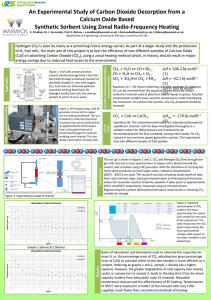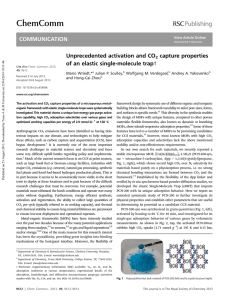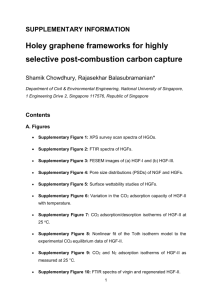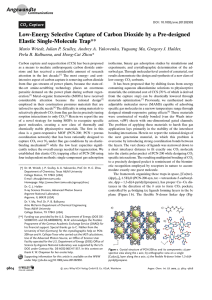Mathematical Modelling and Computation Simulation for Hydrogen
advertisement
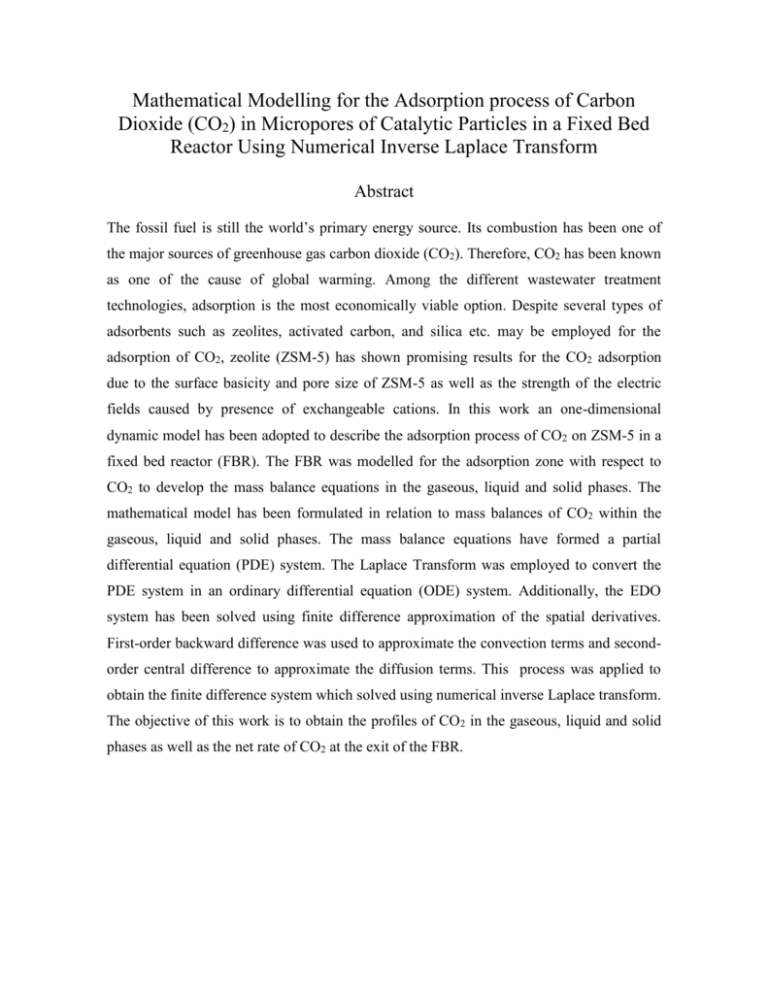
Mathematical Modelling for the Adsorption process of Carbon Dioxide (CO2) in Micropores of Catalytic Particles in a Fixed Bed Reactor Using Numerical Inverse Laplace Transform Abstract The fossil fuel is still the world’s primary energy source. Its combustion has been one of the major sources of greenhouse gas carbon dioxide (CO2). Therefore, CO2 has been known as one of the cause of global warming. Among the different wastewater treatment technologies, adsorption is the most economically viable option. Despite several types of adsorbents such as zeolites, activated carbon, and silica etc. may be employed for the adsorption of CO2, zeolite (ZSM-5) has shown promising results for the CO2 adsorption due to the surface basicity and pore size of ZSM-5 as well as the strength of the electric fields caused by presence of exchangeable cations. In this work an one-dimensional dynamic model has been adopted to describe the adsorption process of CO2 on ZSM-5 in a fixed bed reactor (FBR). The FBR was modelled for the adsorption zone with respect to CO2 to develop the mass balance equations in the gaseous, liquid and solid phases. The mathematical model has been formulated in relation to mass balances of CO2 within the gaseous, liquid and solid phases. The mass balance equations have formed a partial differential equation (PDE) system. The Laplace Transform was employed to convert the PDE system in an ordinary differential equation (ODE) system. Additionally, the EDO system has been solved using finite difference approximation of the spatial derivatives. First-order backward difference was used to approximate the convection terms and secondorder central difference to approximate the diffusion terms. This process was applied to obtain the finite difference system which solved using numerical inverse Laplace transform. The objective of this work is to obtain the profiles of CO2 in the gaseous, liquid and solid phases as well as the net rate of CO2 at the exit of the FBR.








